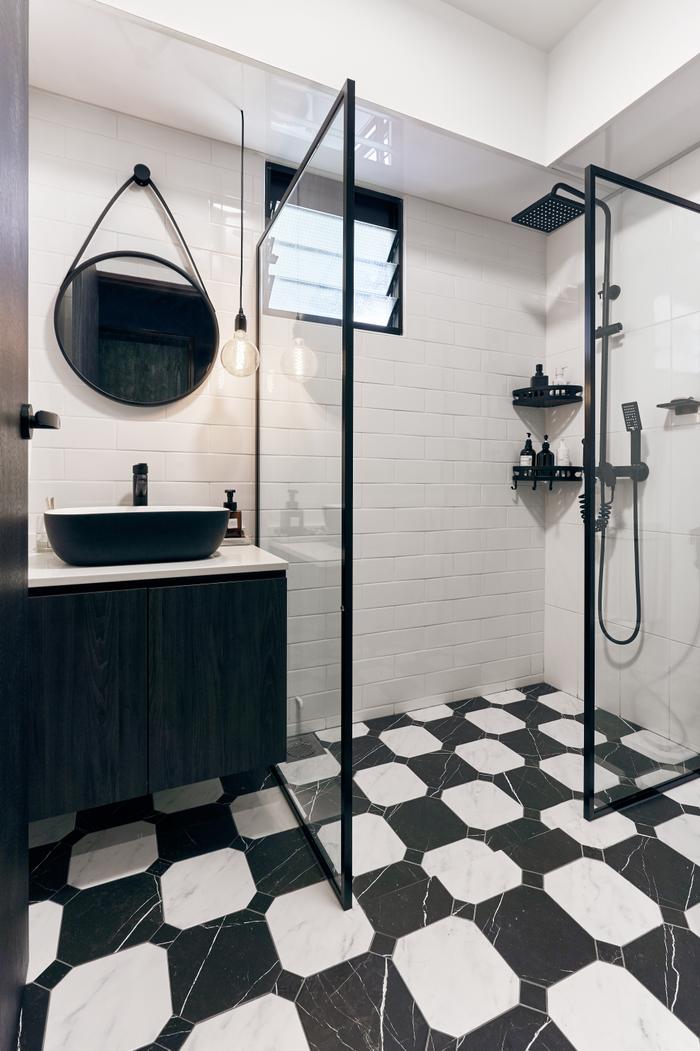Because even with a roof overhead, we all need to eat.
There’s something about renovating a home that just makes us want to spend more – the temptation to replace those new, but oh-so-basic HDB fittings; that hankering to build an extra-large walk-in closet in the bedroom. But before you cave in to your desires, think about the finances.

View this project by Yang's Inspiration Design
The average cost for a (thorough) renovation in Singapore is upwards of $50,000 – and that’s hardly chump change. However, it doesn’t mean you have to forego all of your home goals – you just have to avoid overspending. Here are six renovation tips that will allow you to achieve your home makeover plans, without needing to subsist on cup noodles after.
1. Get an idea of how much things will cost
A picture might tell a thousand words, but it certainly won’t say how much it costs to achieve that sleek minimalist interior you saw on Pinterest or Instagram while brainstorming for ideas. So before you get excited about copying the look of a front-page worthy home, first consider the various expenses involved.

View this project by erstudio
Would you need additional concealment works done? What about designer furniture? Without a full picture, it’s all too easy to end up overspending on your renovation, especially if you are a first timer who has little experience with the financial planning aspect of making over a home.
2. Beware of additional costs
You did your research and have a detailed budget planned out, so what can possibly go wrong? Whether you are renovating a resale flat or a brand-new property, there’s a chance you may end up facing obstacles or unexpected factors that will lead to extra costs (and consequently, overspending).

View this project by Mr Shopper Studio
But don’t just take it from us – take it from homeowner Yee Shee who recently renovated her blue-green Scandustrial HDB home at Bukit Batok.
“We got our flat under a Sales of Balance exercise and we were unable to choose whether it would come with an open kitchen. In the end, we had to spend an additional sum to knock down the walls; that caused us to go over our budget. But in the end, it’s still quite worth it,” she says.
3. Splurge, but prioritise what to spend on
While the idea of splurging may sound odd in an article that’s about how to avoid overspending on a renovation, it actually isn’t – you just have to prioritise what to spend on.

View this project by Anhans Interior Design
Putting your money into durable materials and efficient fittings/fixtures is one way to save in the long term (or even for a future renovation) because you will end up dodging break downs and hefty repair costs due to their longevity.
4. Go light on cosmetic works
Yes, those detailed cornices and herringbone patterns look great, but the idea of ‘beauty is only skin deep’ holds true for home renovations too – that is if you are on a tight budget which you can't afford to burst.

View this project by Rockin Spaces
Going light on cosmetic works will allow you shave off some renovation expenditure due to lowered costs in the material and labour departments. That said, if there’s a specific look/feature that you MUST absolutely have, you can simply reduce the scale of your plans. For instance, instead of covering your entire home in patterned tiles, why not opt to do it for just a small space?
5. Retain existing home elements
While it’s tempting to bring your vision of a dream home to life in full, it might be better (for your bank balance) to change your plans a little by retaining existing elements as opposed to going for a total revamp. In the case of resale homes, this would mean keeping what you can, namely features, fixtures and/or fittings that are still in good condition.
One way that couple Marvin and Lingyi managed to save on their Telok Blangah flat’s renovation was by keeping the original flooring and door seams that came with it.

Credit: @ourseaofgreen
“I remember being quite angry when they (the designers) wanted to keep the door seams because I was like ‘Nooo, it’s gonna be so ugly’, but it ended up okay,” says Lingyi. “The glossiness of the original parquet also threw us off at first, but after it was buffed, it had the matte finish we were looking for. That helped save us some money.”
6. Get the help of a professional
One of the biggest myths about hiring an interior designer is that your renovation is going to be more expensive because you will have to foot the bill for their services. But the matter of the fact is, hiring one can help you save on the overall cost of your renovation.

View this project by Le Interi
When it comes to setting the budget, most designers are happy to let you take the wheel. You tell them how much you are able to spend, and they will find ways to prevent you from overspending, whether it’s through finding alternatives to pricey fittings or sourcing for affordable materials.
Now, if you are convinced to work with an interior design firm but aren’t sure which is the right one for the job, let us know! We can help by finding you five local interior design firms through our recommendation service for free.

 Get a budget estimate before meeting IDs
Get a budget estimate before meeting IDs